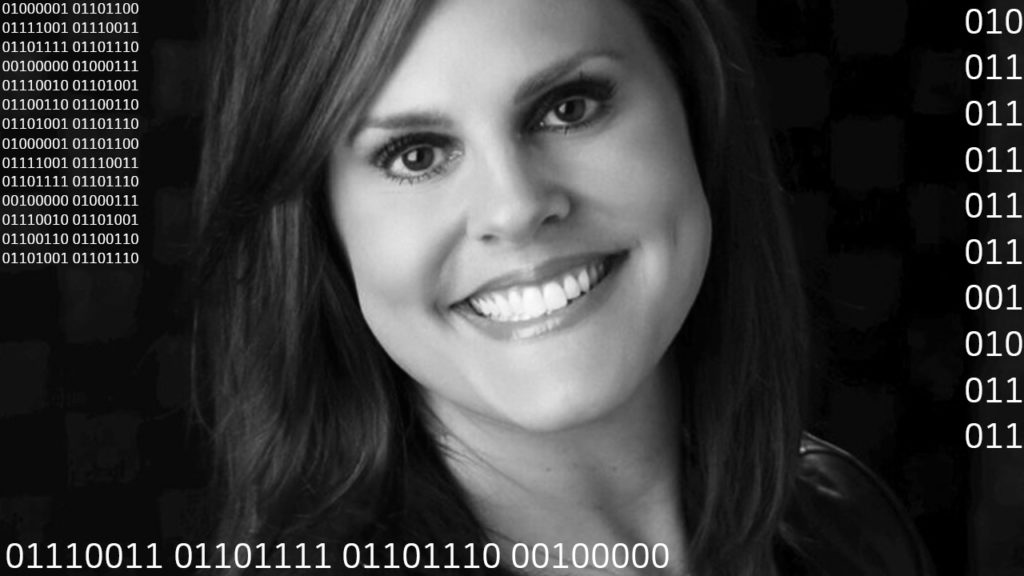Intel is undergoing a transformation. For half a century, the brand has maintained a reputation for its computer processors. As the tech giant emerges from its chrysalis a provider of everything from AI to 5G, it leaves Intel’s marketing team with a challenge that, ironically, can’t be solved with technology alone.
Alyson Griffin, Intel’s VP of global brand marketing, sat down with AList to explain this dynamic shift and how one of humanity’s oldest practices—storytelling—is helping to advance technology.
What challenges do you face as Intel repositions itself as a brand?
We just celebrated our 50th anniversary this summer. From an outbound marketing perspective, we were tied very explicitly to a B2C motion and our PC
There are these territories [5G, AI, VR, etc.], where compute power and heavy performance and power are critical but they weren’t places where we were talking about ourselves externally.
How do you shift focus without sacrificing what Intel is known for?
We still do have a very big marketing focus not only directly from Intel but with our OEM partners on our PCs whether it’s gaming, PC innovation, etc. The good news is that we still have that and do that with our own dollars as well as those of our partners. What we’re doing is expanding the aperture of the Intel brand and my role is to go think about business transformation examples that inspire or have human interest and impact.
Intel doesn’t have an awareness problem anywhere in the world. What we do have is a relevance change. People are unsure about how and where we’re relevant beyond the great stronghold we have from a PC perspective. In order to move this to a data-centric, more business [focus] we’re looking for these really great stories.
How do you use storytelling across B2B and B2C marketing strategies?
The strategies align. For us, our single-minded brand proposition is making the impossible possible. From a brand perspective, we’ve pivoted to demonstrating these transformational solutions that have human impact and interest that are AI for good, etc. where you capture the consumer’s imagination.
To get into the nuts and bolts of our strategy here, I’m laying an umbrella story for broad awareness and interest that has technology pillars that actually can be pulled through all the way down to demand gen because I’m talking about a solution that’s real, current and on the truck today. I can do the baton toss, if you will, to my counterparts in the business unit marketing team.
The pivot happens when we get an interesting and broad enough story that can pass very easily to the business units who can pivot to their target and bring it to life.
[For example], Intel is restoring the Great Wall of China. They came to us for computing power but in talking with them, Intel realized that they could solve multiple problems.
[Griffin explained that they use drones to survey the wall and create 3D models. AI analyzes the visuals and helps anticipate needs, calculating down to the millimeter.]
Even if you aren’t interested in Intel or tech… say you’re a business that [can’t imagine] what Intel would be doing beyond a PC, we’re trying to paint an image of all these possibilities and demonstrate with real technology solutions that are available in the market of how businesses or organizations can rethink what’s possible.
How has your job changed over your career?
I started in the early ’90s at a PR firm so I worked with reporters all the time. My job was to stand at a fax machine—I have to explain to my children what the heck that is—and fax 500 press releases to various reporters because there was no consolidation. All we had to do back then was have a price and a speed [of a new computer] and it would 100 percent get covered because it was so amazing.
Part of the challenge for me over the years is that I can’t just call up any old reporter and say, “it’s five dollars less and 10 times faster, go write about it.” I’ve had to get more creative about storytelling that includes some kind of technology angle. My world has changed dramatically since I first started.
Where do you find inspiration?
I’m inspired by the stories of our customers, to be honest. I work closely with the sales team and hear amazing stories about things like precision medicine and curing cancer. There are so many things that our customers and partners are doing and it’s exciting.
It’s like a buffet before me and I get to pick one, focus on it and build out a great story. I think about our target and how I make it exciting and accessible and real and inspirational for the world. I have to say that I get a lot of personal satisfaction out of that.

